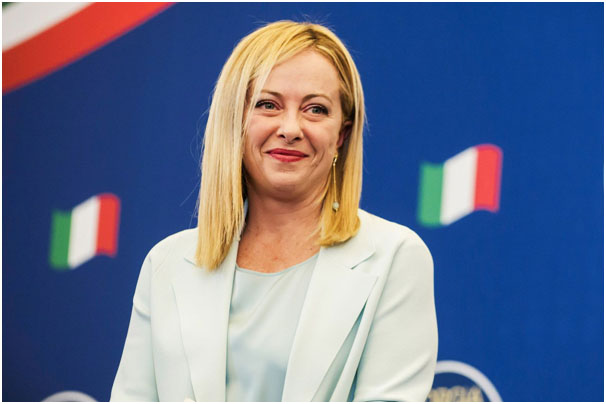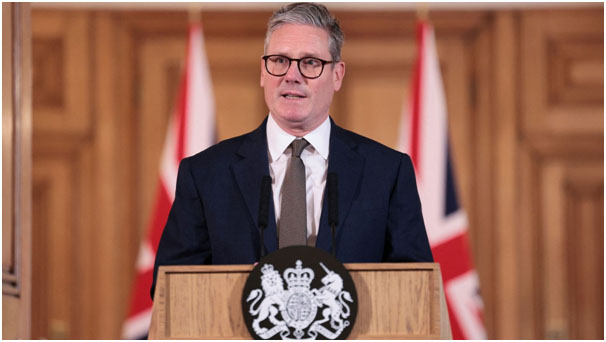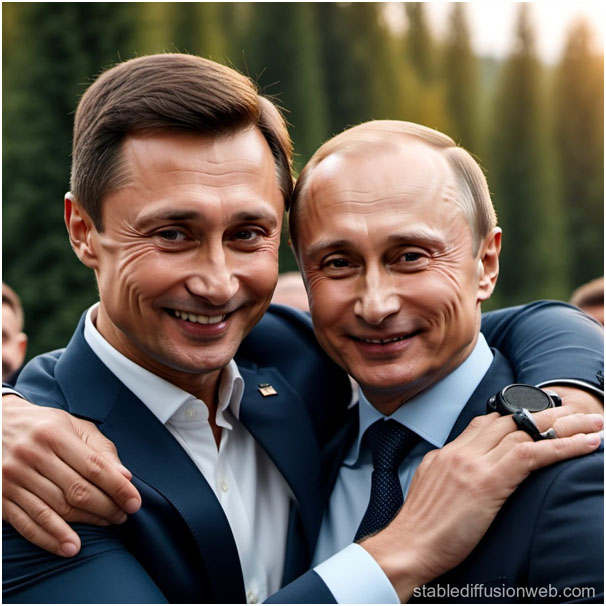Introduction
Zelensky and a delegation of seven European leaders rushed to the White House on 18 August 2025, for talks with Trump after the US President had rolled out the red carpet for Putin at Anchorage on 15 August 2025, and appeared to swing towards Russia’s positions on the war. President Trump abandoned demands for President Putin to agree to a ceasefire ahead of negotiations and said Ukraine would have to concede territories to Russia as part of a settlement.
The meeting in Alaska led to Russian demands for territorial annexations in the Donbas region and Ukraine ceding sovereignty over Crimea, while the Washington meeting discussed these demands as well as security guarantees, and possible further efforts to end the conflict.
The talks in Washington yielded a commitment from Trump, at least for now, to join security guarantees for any peace deal and reserve discussion on territorial swaps with Russia for later. Providing Ukraine with the post-cease-fire security guarantee, that it has long insisted as part of any resolution to the war is more important now than ever before. Although Kyiv’s ultimate security rests with maintaining a strong and capable military, Ukraine must also be reassured and convinced that there will be no resumption of war.
Ukraine and its European allies see robust security guarantees as a crucial element in unlocking a peace deal with Russia, potentially allowing Kyiv to compromise in areas it would have rejected previously.
Security Guarantees
The problem is that everyone has a different understanding of what a security guarantee would mean for Ukraine. The Italian Prime Minister Giorgia Meloni proposed to provide Ukraine with military support if it is attacked by Russia in future. A NATO-like collective defence commitment that stops short of membership of the bloc for Ukraine.

It is equally implausible that the Russians would, as Steve Witkoff, the US President’s special envoy claimed, agree to guarantees based around an Article 5-type solution given the extent to which that would lock in the very Western influence they have sought to eject.
Article 5 of the North Atlantic Treaty, has a very clear understanding that if the territory of a NATO ally is attacked, all the others will come to its defence.
This leaves open the possibility that what has been discussed are ‘guarantees’ that look like the kind of ‘assurances’ involving Russia given under the Budapest Memorandum, or were proposed as part of the failed negotiations in Istanbul in 2022, which gave Russia a role as a guarantor – a wholly unacceptable situation now.
A European troop presence would add a lot of weight to the security assurance, because it would mean that Russia will then be going to war not just with Ukraine, but with Europe. But this would also raise the stakes.
Though there have been suggestions regarding deployment of US forces to ‘protect’ Ukraine, President Trump is clear that Europe is the ‘first line of defence’ for Ukraine, a stance consistent with his desire to shift more of the responsibility on to European countries for their own security. European leaders talked about a ‘Coalition of the Willing,’ a European group led by the UK and France, potentially including a multinational force on the ground, but the form and function of a European force now seem to have been scaled back from some of the early ambitions.
Trump has ruled out sending US ground troops, but floated a form of air support as a possibility. You have my assurance, and I am President,” he told Fox News there would be no “boots on the ground” in Ukraine. He added that the US could still play a role “by air, because there’s nobody that has the kind of stuff we have.”
While Prime Minister Keir Starmer of UK has floated the idea of an international peacekeeping force in Ukraine, ranging from a few hundred observers to a contingent of tens of thousands. But here again a UN force where a permanent member of the UNSC is directly involved will find their hands tied behind their back.

Maintaining peace after a ceasefire will require a monitoring mission that can patrol both sides of the line of occupation. This will depend heavily on surveillance, and needs to be led by a country or organization that both Ukraine and Russia trust.
Now, instead of a significant force with combat power and a strong deterrent capability, something focused on helping Ukraine rebuild and restructure its forces now seems to be on the cards. But it is not just land borders, a secure and open Black Sea is also vital for Ukraine’s economy and regional stability.
As per Sergey Lavrov, Russia supports guarantees based “on the principle of collective security, on the principles of indivisible security.” “Anything else, anything unilateral is, of course, an absolutely hopeless undertaking.”
The Challenges
The question of post war security guarantees is emerging as the central challenge. The US has stated that Europe, not the United States, should bear the primary burden of any guarantees, declining to promise any specific form of involvement. European leaders are now trying to produce a formula that could provide what is needed. Recently, President Macron of France announced that 26 Western allies were prepared to support Ukraine “by land, sea, or air” once the fighting stops. But the details of these contributions remain vague, given that so far only Britain, Estonia, France, and Lithuania have publicly pledged to put forces on the ground in Ukraine.
But what is more important is to ensure that Ukrainian forces are strong and capable, and are able to draw on the resources of NATO, even if outright membership in the alliance is out of the question.
European leaders need to accept the present situation: that any US contribution to security guarantees will be minimal. Supporting Ukraine’s military and deploying significant forces on the periphery of Ukraine offers the best way to reassure Kyiv that Europe’s commitments are real. Though such an arrangement will not be easy, it is desirable for developing a credible path toward ending the war and to ensuring Ukraine’s security.
Ready for Peace
More than anything, you need the leaders of the four sides in this case Russia, Ukraine, US, and Europe to see either a ceasefire or a peace as preferable to the status quo. These leaders have to be in a position to act on that. They have to be strong enough and willing to get there. There has to be some kind of a formula that is potentially viable and a process that is acceptable.
While a ceasefire is the more realistic goal. It essentially involves cessation of hostilities, separation of forces or disengagement followed by a de-escalation. To negotiate a formal peace would take considerably longer time, because it involves a number of issues that both sides would like to bring to the negotiating table.
The biggest difference then, between a ceasefire and a peace is that in a ceasefire you don’t sign away your rights to anything. You simply agree to stop the fighting. In a permanent peace, you have got to sign away rights which could range from territory, to populations or an alignment as in this case, it is Ukraine agreeing not to be part of NATO. There are also a host of issues such as security assurances, reparations of prisoners of war and alleged human rights violations. It has a degree of finality for which the stakes are enormous. The phrase “peace agreement” or “peace treaty” therefore implies a degree of formality, permanence.
Ceasefires can be formal or informal. It can be called an armistice, a cessation of hostilities. It is almost the same, Korea and Cyprus are a case in point where the fundamental issues dividing them have not been settled but firing across the border has ceased.
Russia and Ukraine
Ukrainians have become sophisticated observers of the international game over the past three and a half years and are now well aware of the stance of different partners. The US under Trump is putting enormous pressure on Ukraine since the disastrous meeting at White House and President Zelensky is now focusing on not being the obstacle while simultaneously pushing his own agenda forward. Domestically he has the space to pursue what he argues is necessary in the international domain. However, as per reports there is greater public opinion towards peace and conflict termination.

From the Ukrainian perspective, setting a clear dividing line between ‘acceptable’ behaviour and that which warrants Western military action also necessitates defining the geographic area to be defended. This means even more emphasis will be on where the ‘line of contact’ is at the time when fighting ends.
Russia on the other hand feels its security interests must be considered before any settlement. Russia has repeatedly declared that Ukraine must abandon ambitions to join NATO and adopt a neutral status. It has also rejected the presence of troops from NATO states in Ukraine.
The Russian Foreign Minister Sergey Lavrov in an interview to NBC on 22 August stated that Putin would meet Zelensky “when the agenda is ready for a summit,” but noted that “this agenda is not ready at all.”
Lavrov accused Zelensky of failing to accept Russia’s demanded preconditions for negotiation, such as “discussion of territorial issues,” despite the fact that Zelensky stated on 18 August that he remains willing to meet with Putin unconditionally and directly discuss territorial questions.
Conclusion
The fact remains that ultimately, negotiating tables reflect battlefield realities and dynamics, so countries don’t opt for compromise at a negotiating table if they think they have the ability or support for prolonged fighting which will give them what they want at an acceptable cost.
For Ukraine there is also a fear that Russia will use peace and the lifting of sanctions to rebuild and retrain its army, and re-emerge as a more formidable force to attack it again. Unlike the territorial control question, security guarantees require US involvement. Ukraine is also wary of assurances that sound strong but prove meaningless. The West’s weak responses to Crimea in 2014 and Ukraine in 2022 demonstrated the ineffectiveness of the 1994 Budapest Memorandum and the 2014–15 Minsk agreements, respectively.
But dealing with Trump 2.0 is not easy due to his constant variables hence for Ukraine and Europe the question now is whether the relative goodwill shown by the US towards them in Washington will endure or if Putin can exploit Trump’s belief in the strength of a US-Russia bilateral relationship and distance the US away from Europe and Ukraine. The fact remains, that times are uncertain, personalities involved are fringing on irrationality, motives are unclear and personal interests are paramount. Finding a solution in such a predicament is anything but easy.
ABOUT THE AUTHOR
 Maj Gen VK Singh, VSM was commissioned into The Scinde Horse in Dec 1983. The officer has commanded an Independent Recce Sqn in the desert sector, and has the distinction of being the first Armoured Corps Officer to command an Assam Rifles Battalion in Counter Insurgency Operations in Manipur and Nagaland, as well as the first General Cadre Officer to command a Strategic Forces Brigade. He then commanded 12 Infantry Division (RAPID) in Western Sector. The General is a fourth generation army officer.
Maj Gen VK Singh, VSM was commissioned into The Scinde Horse in Dec 1983. The officer has commanded an Independent Recce Sqn in the desert sector, and has the distinction of being the first Armoured Corps Officer to command an Assam Rifles Battalion in Counter Insurgency Operations in Manipur and Nagaland, as well as the first General Cadre Officer to command a Strategic Forces Brigade. He then commanded 12 Infantry Division (RAPID) in Western Sector. The General is a fourth generation army officer.
 Major General Jagatbir Singh was commissioned into 18 Cavalry in December 1981. During his 38 years of service in the Army he has held various command, staff and instructional appointments and served in varied terrains in the country. He has served in a United Nations Peace Keeping Mission as a Military Observer in Iraq and Kuwait. He has been an instructor to Indian Military Academy and the Defence Services Staff College, Wellington. He is a prolific writer in defence & national security and adept at public speaking.
Major General Jagatbir Singh was commissioned into 18 Cavalry in December 1981. During his 38 years of service in the Army he has held various command, staff and instructional appointments and served in varied terrains in the country. He has served in a United Nations Peace Keeping Mission as a Military Observer in Iraq and Kuwait. He has been an instructor to Indian Military Academy and the Defence Services Staff College, Wellington. He is a prolific writer in defence & national security and adept at public speaking.








